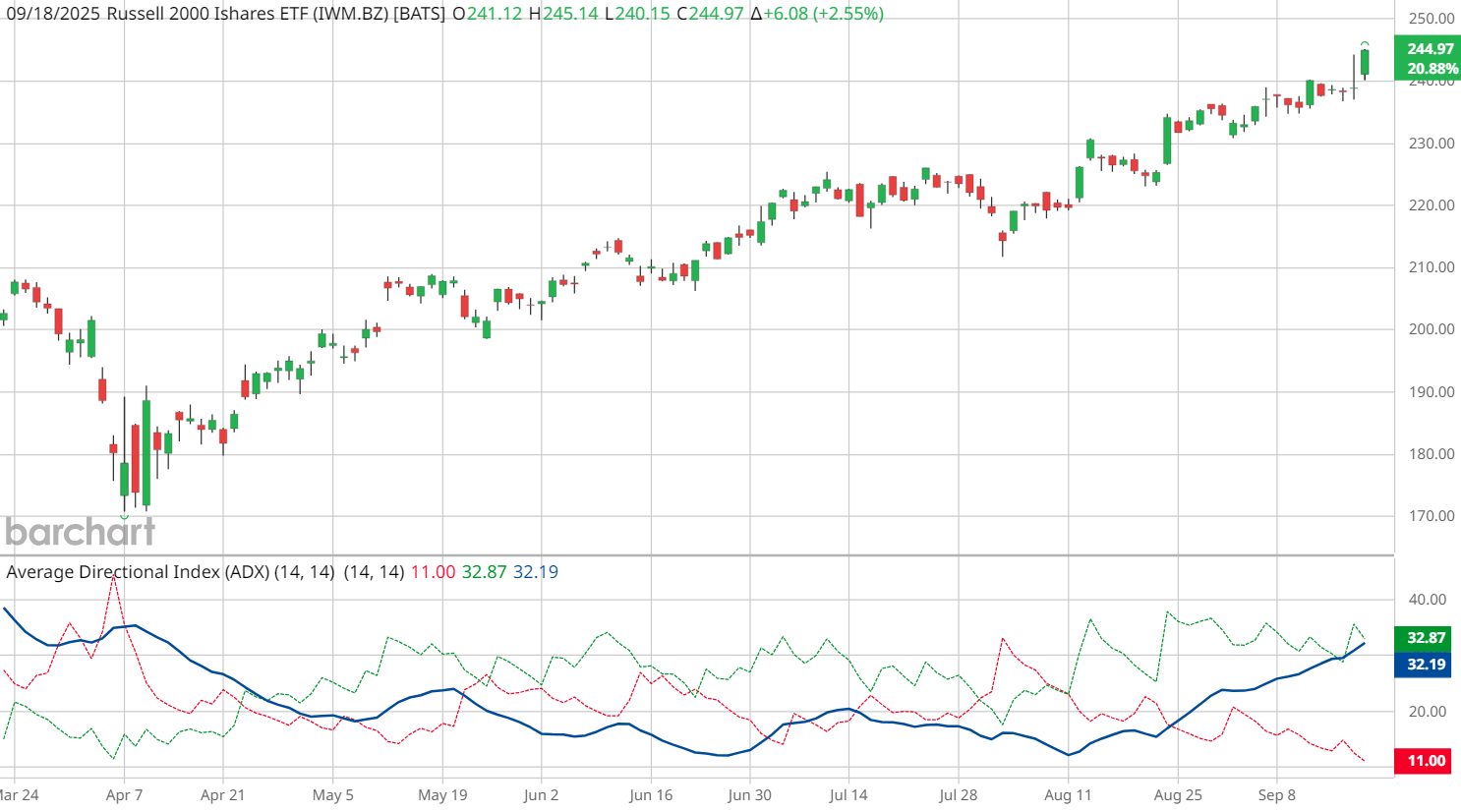|
|
|
Name
Cash Bids
Market Data
News
Ag Commentary
Weather
Resources
|
Use ADX to Find Stronger Trade Setups and Avoid Getting Whipsawed by Weak Stock Trends
Most traders focus on finding entries — but avoiding bad trades is just as important. That’s where the Average Directional Index (ADX) comes in. In this clip from his recent live Barchart webinar, John Rowland, CMT, explains how ADX helps traders filter out non-directional markets and wait for higher-probability setups. What Low ADX MeansJohn highlighted a Tesla (TSLA) example where price action looked compelling — but ADX told a different story:
This prevents traders from jumping into false breakouts or whipsaws. When ADX Confirms a TrendBy contrast, John used Microsoft (MSFT) as an example:
The slope of ADX is important, too:
Why It MattersWithout ADX, traders can get whipsawed by signals that look valid but form in weak or sideways markets. By filtering for ADX > 20 (emerging trend) or ADX > 25 (strong trend), you:

Try It with Barchart Tools
Bottom LineADX isn’t just for spotting trends — it’s for filtering out directionless markets and choppy stocks. By waiting for ADX to cross 20 or 25, traders can sidestep weak markets and focus only on higher-probability moves. Watch the clip where John Rowland explains how ADX reveals when to stay out:
On the date of publication, Barchart Insights did not have (either directly or indirectly) positions in any of the securities mentioned in this article. All information and data in this article is solely for informational purposes. For more information please view the Barchart Disclosure Policy here. |
|
|